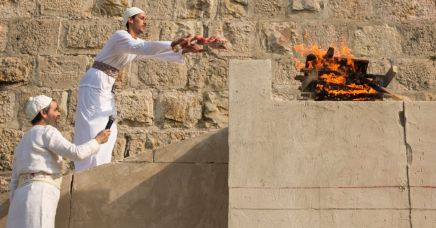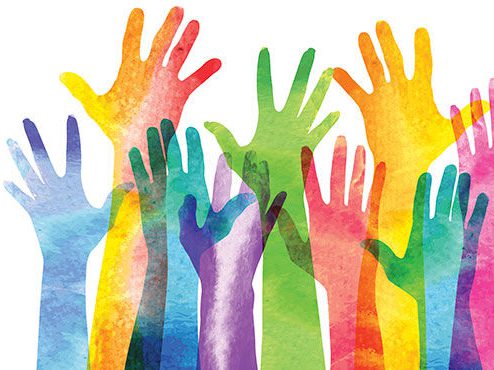Our hearts this Shabbat are with our Muslim brothers and sisters who are mourning the profound loss of 49 souls who were gunned down while praying in mosques in New Zealand. We pray also for the 48 people who remain in critical condition. Today I am reminded of the horrific massacre that took place at Maharat Hamachpela, the cave of the patriarchs in Hebron,  when Baruch Goldstein killed 29 Palestinian Muslims in prayer on Purim in 1994. As joyous as Purim is, I also associate this holiday with violence and bloodshed.
when Baruch Goldstein killed 29 Palestinian Muslims in prayer on Purim in 1994. As joyous as Purim is, I also associate this holiday with violence and bloodshed.
Today we begin the book of Vayikra. In the words of Jack Miles, author of the Biography of God, in Vayikra we enter a world in which “nothing goes wrong that cannot be set aright by the proper ritual.” Parashat Vayikra instructs the Israelites and the priests on what type of offering to bring and when. In essence, Vayikra is an instruction manual. The language is dry and repetitive, but if we use our imaginations while reading the verses, we receive a bloody picture.
The pages themselves seem spattered with blood. But here’s the interesting part: the violence that took place in the mishkan was contained and controlled. It was confined to animals — no violence against human beings was permitted. And even for the practice of taking an animal’s life, there were clear and specific rules that set limits on what could be done. No limb could be torn from a living animal. Only certain animals could be offered for ritual sacrifice. Slaughter must be swift and painless. No blood could be consumed.
The sacrificial system set a precedent that came to be fundamental to Judaism. Human beings have aggressive urges that can easily get out of control. Through the system of sacrifices we learn the moral and spiritual obligation to overcome these violent instincts, to channel them in constructive directions; to honor the sacredness of all life and never become bloodthirsty. What does it mean to refrain from becoming bloodthirsty? It means honoring the dignity of all life and abhorring any loss of life.
The Jewish ideal is to live out the adage of Pirke Avot, the Ethics of our Fathers: “Aizehu gibor? Who is courageous, who is a hero? Hakovesh et yitzro — one who conquers one’s impulses” (Avot 4:1). What can we do with our aggressive inclinations? Judaism would say that such impulses are not evil in themselves. Properly controlled, properly directed, they can be a source of good in our lives. So the Talmudic Sage Rav Ashi teaches: One born under the sign of Mars — that is, a person who has aggressive tendencies — can choose to be a murderer or thief, or choose to perform a sacred mitzvah instead: become a shochet — a kosher slaughterer, or a mohel, a circumciser [Shabbat 156a]. Judaism counsels us, in other words, to uplift all our impulses, including our violent ones, and put them to constructive use. And as we work out to build our muscles and physical strength, we can also cultivate our moral strength, our ability to control our dangerous urges, to master our temper and restrain our inclination to lash out at others.
Today we live in a world that often seems overwhelmed by violence and chaos. And we wonder, how can we respond? We learn two lessons from our ancient priests: to channel our aggression into productive work, and to create spaces of order and clarity in the midst of a chaotic wilderness.
Let us appreciate what our ancestors created to deal with an age-old human problem. There, in the midst of the wilderness, they created a holy space in which violence was limited, contained and uplifted to a holy purpose. In our own troubled time, let us do the same.
